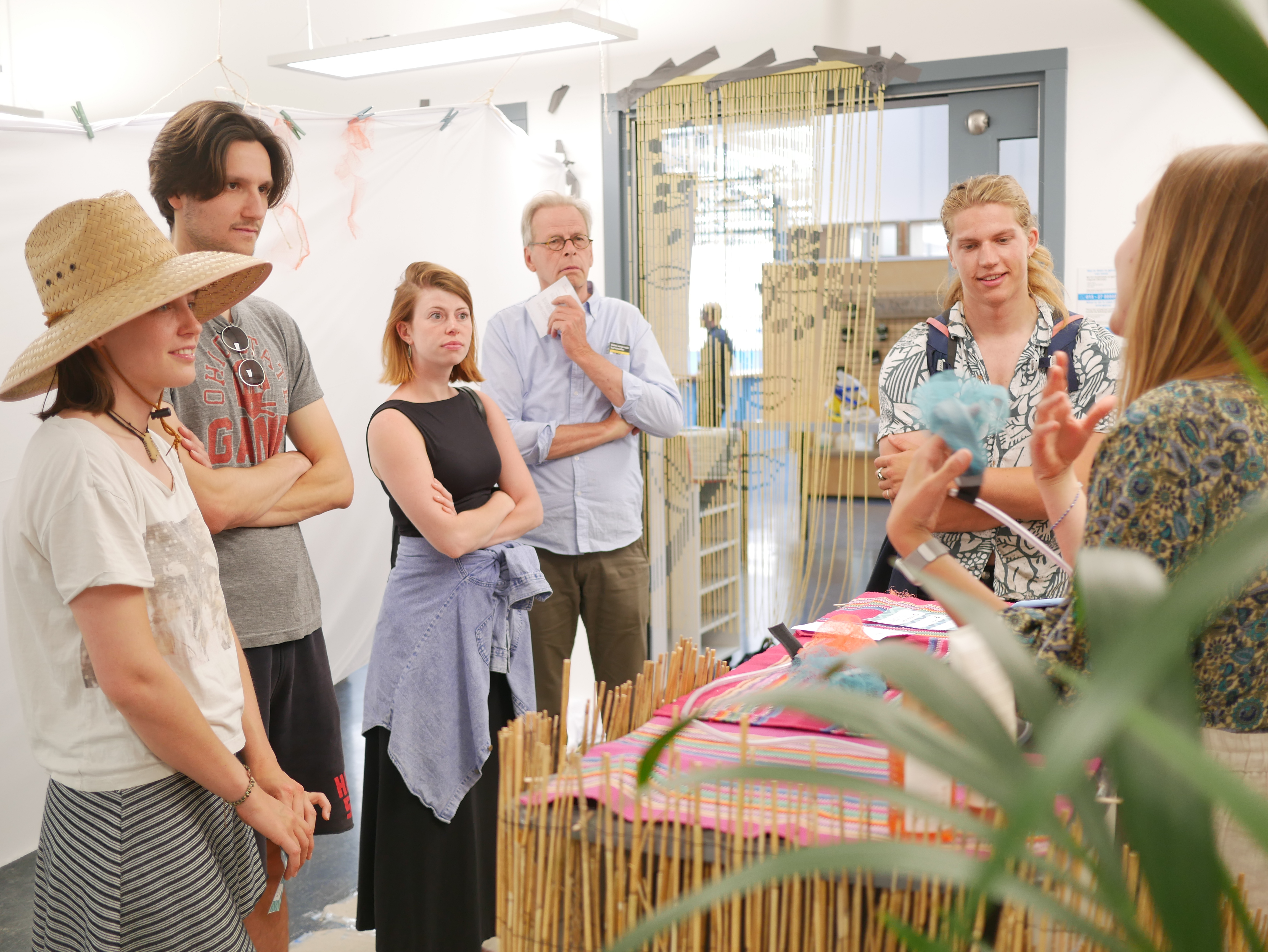
Reflection through Collection - group 15
| Team Number | ?Group 15 - Totally Spies |
|---|---|
| Students | AlinaYuliya Pylypko Sterre Hoek Sterre Hoek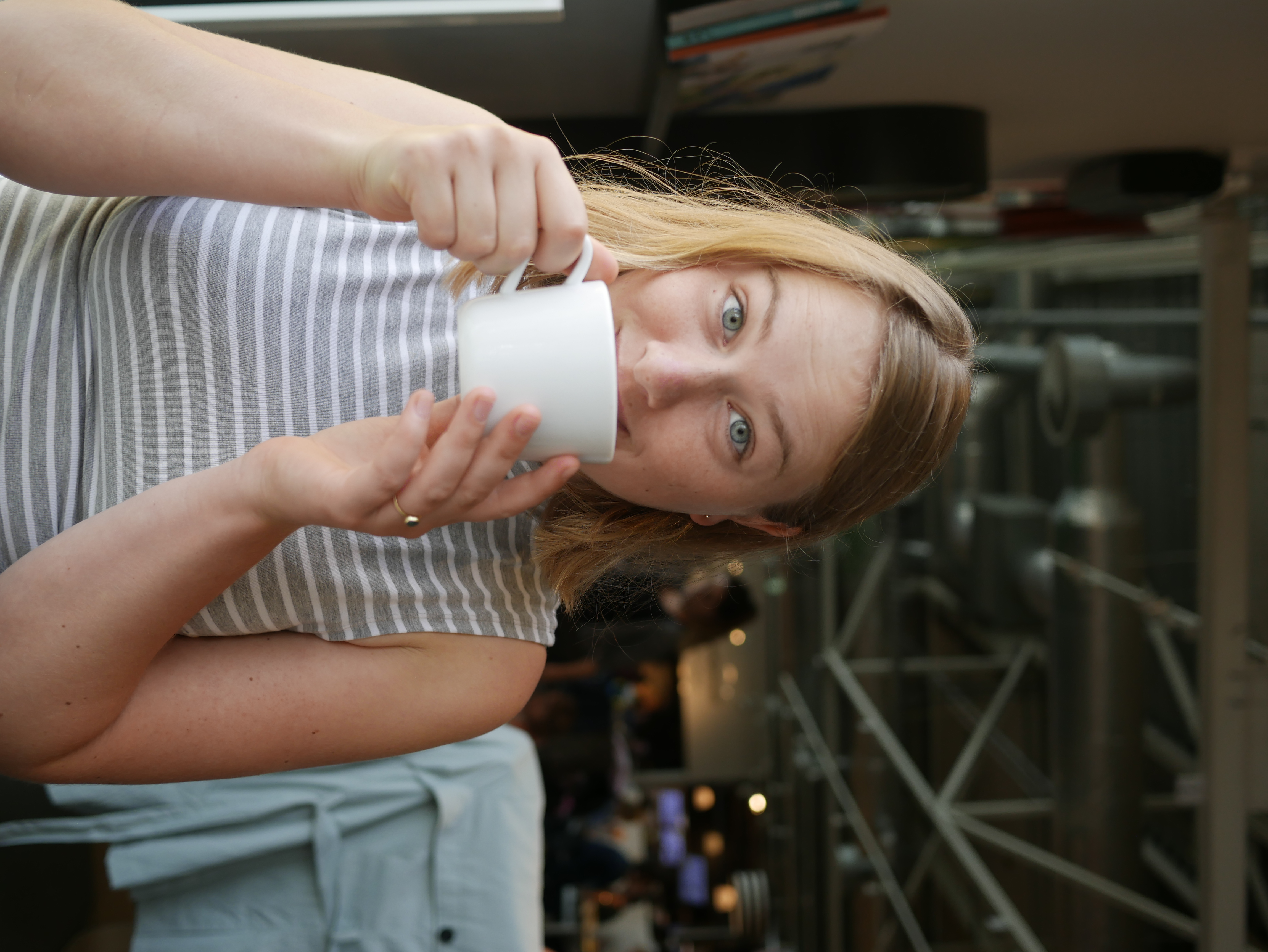 Nina te Groen Nina te Groen |
| Coach |  Ianus Keller Ianus Keller |
| Brief | O'Neill |
| Keywords | |
| One Liner | |
| Link to video | [https://youtu.be/qk12nvOY4xU](https://youtu.be/qk12nvOY4xU) |
| Link to video 2 | https://youtu.be/cdDPwUFDe1Q |
| Property | |
| ? ITD Projects | ?Group 15 - Totally Spies |
Reflection through Collection
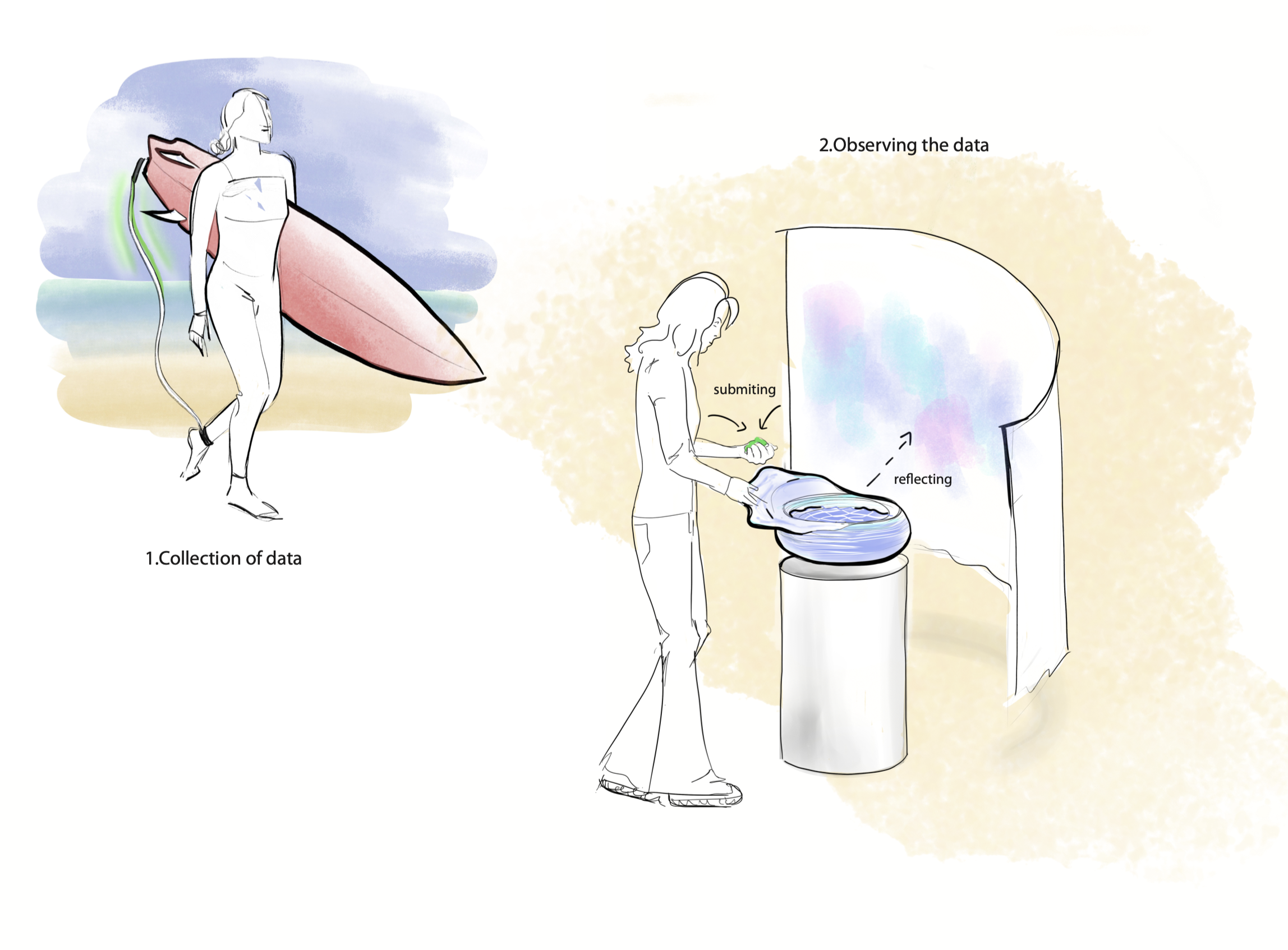
Concept explanation
WHY?
In Jack O?Neills words: ?The ocean is alive and we?ve got to take care of it.?
And we agree. It is a fact that when many people contribute to the same cause or work towards the same goal, amazing things can be achieved. Our concept strives to motivate and connect surfers around the world through what is known as citizen science where anyone can participate in the collection and research of data.
To protect and preserve our oceans, it is important to know how the state of the oceans is changing. Our concept involves a surf leash with sensors designed to collect data such as water temperature, PH level, salt quality and possibly even plastic particle pollution. By using this leash while surfing, users will be part of a greater community who works together to gather information about the oceans. The user wears this leash and while they are surfing it will passively measure and collect data. This is done to ensure the user is not distracted or uncomfortable while surfing and they focus completely on their experience. In the end, the user is encouraged to reflect on their experience by washing out the data from their leash, just as they will wash themselves and their wetsuits after surfing.
WHAT?
The design is a leash made from recycled materials such as old fisherlines and woven plastic. O?Neill already uses recycled PET bottles spun into a yarn: ?We use REPREVEŽ made from recycled PET bottles cleaned and woven into our yarns.? (O?Neill, 2022).
This is what we are working towards: materials that are sustainable and that have a small impact on the environment. This is why our leash is also rented at the surf shop.
When the user is done with surfing, we want users to have a feeling of satisfaction and completion; to know that they did something good for the oceans. Our final part of the concept is designed to fit into the routine of a surfer: After surfing the websuit is washed out to remove sand and salt, but also the leash is washed and rinsed. This is when the data is collected and sent to O?Neill?s database. This gives the user an all-rounded experience from the start of their surfing time to the end when they leave the water and return to shore.
HOW?
The sensors that are housed inside the leash measure passively, meaning the user does not have to interact with the system while surfing. However, it is recommended that a form of (visible) feedback is given to the user so they know whether the measurement is working or not.
At the O?Neill concept store, surfers will explore the data they have collected while surfing: an intimate moment to reflect on the surf session and on yourself. It is a washing basin designed to wash the leash, but with a twist. Based on the measured data, which can differ per day, person, and location, the basin bowl will vibrate in a unique pattern. From above the bowl, a light will shine onto the water creating a reflection on the rippling water and forming unique light effects on the walls and ceiling around the user.
- Surfer will collect the data via rented leash;
- Data will be transmitted via ?washing it out? from the leash to a basin;
- As feedback, the projection on a surface of the water will be activated and the surfer will be able to observe vibrating reflections of data.
Exhibition setup
Welcome to the exhibition
From the very beginning, the entrance to the exhibition attracted attention by being able to see a snippet of the exhibition and the sand on the floor. Here the visitors got a first introduction to the concept and the 3 parts of the exhibition that await them. They also received a flyer that gave them a more detailed explanation of citizen science and guided them through the experience. Finally, to fully immerse themselves in the concept, visitors were asked to take off their shoes and walk barefoot to the beach and surf shop.
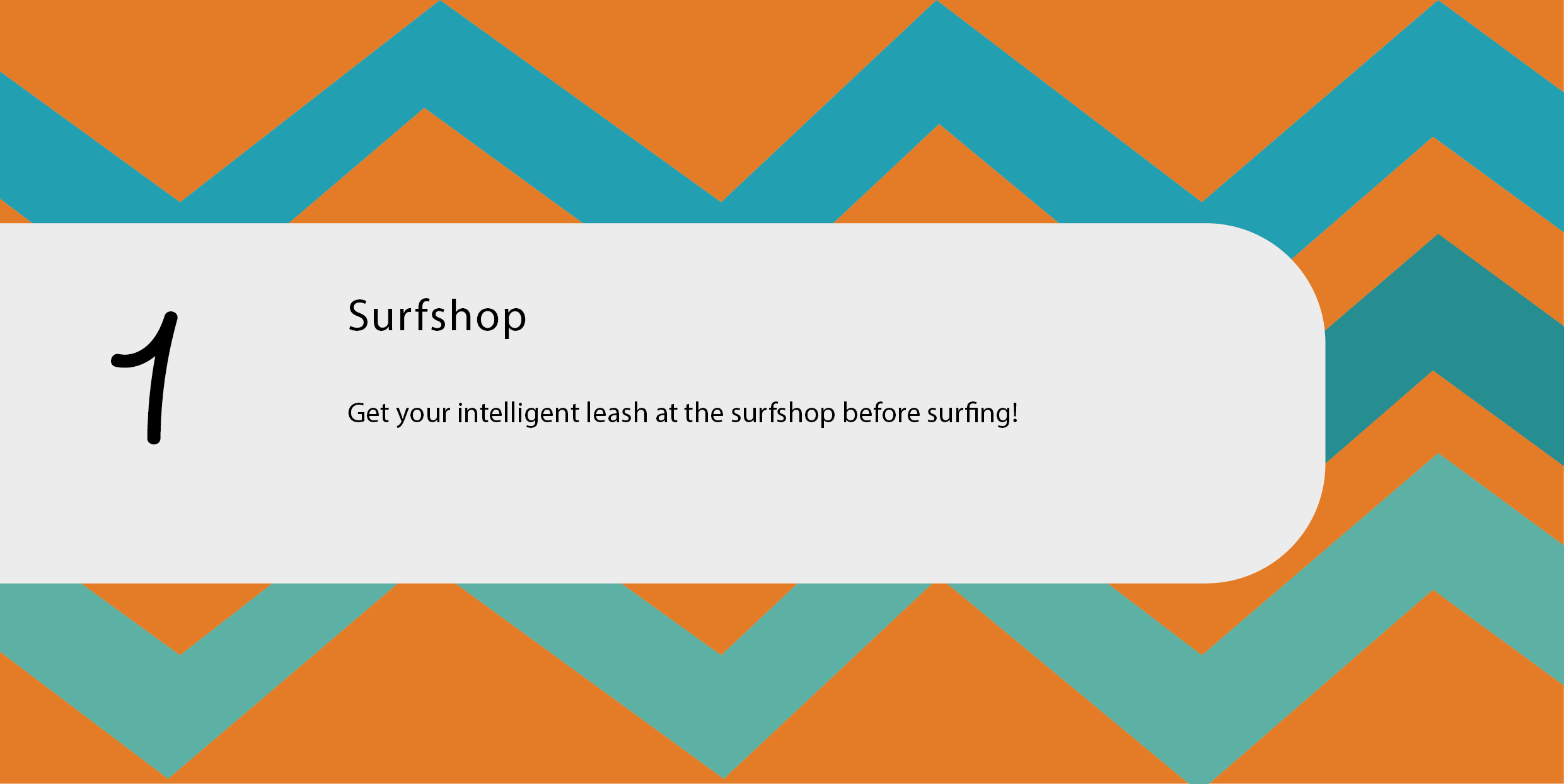
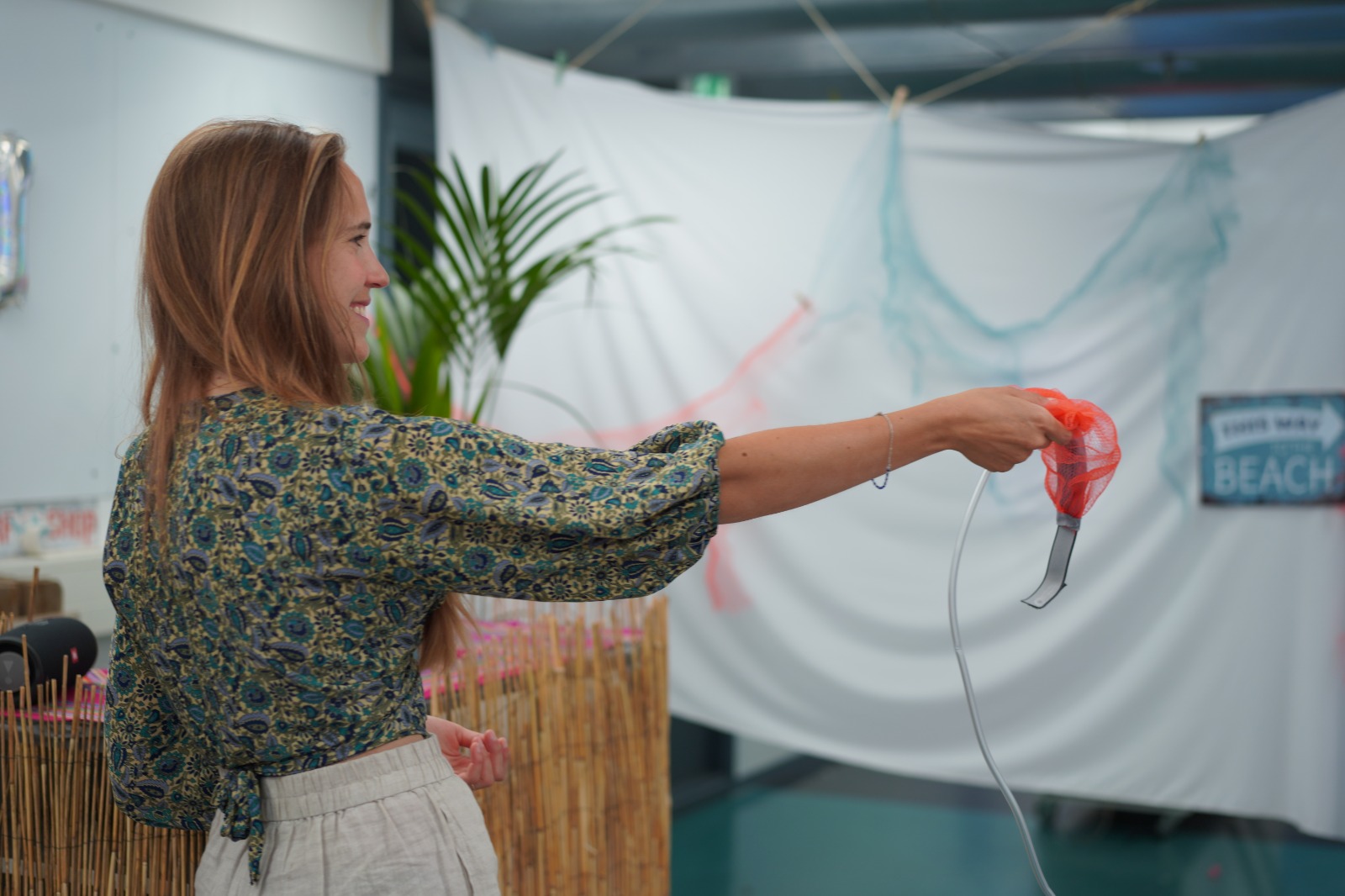
Visitors enter the surf shop via Scheveningen sand to borrow a surfboard and the new intelligent leash. The redesigned leash is special in the sense that it has an aesthetic design, unlike the classic black ones that are only designed for functionality. In previous tests with surfers, we have learned that sensors in a wetsuit can be restrictive when surfing and that a wetsuit leaves little room to install sensors. For this reason, we have focused on the leashes, as they provide enough space to install sensors (e.g. temperature, ph-level) and also provide enough exposure time to the water to be measured. The leash is coated with recycled fishing nets, referring to the surfer fishing for data.
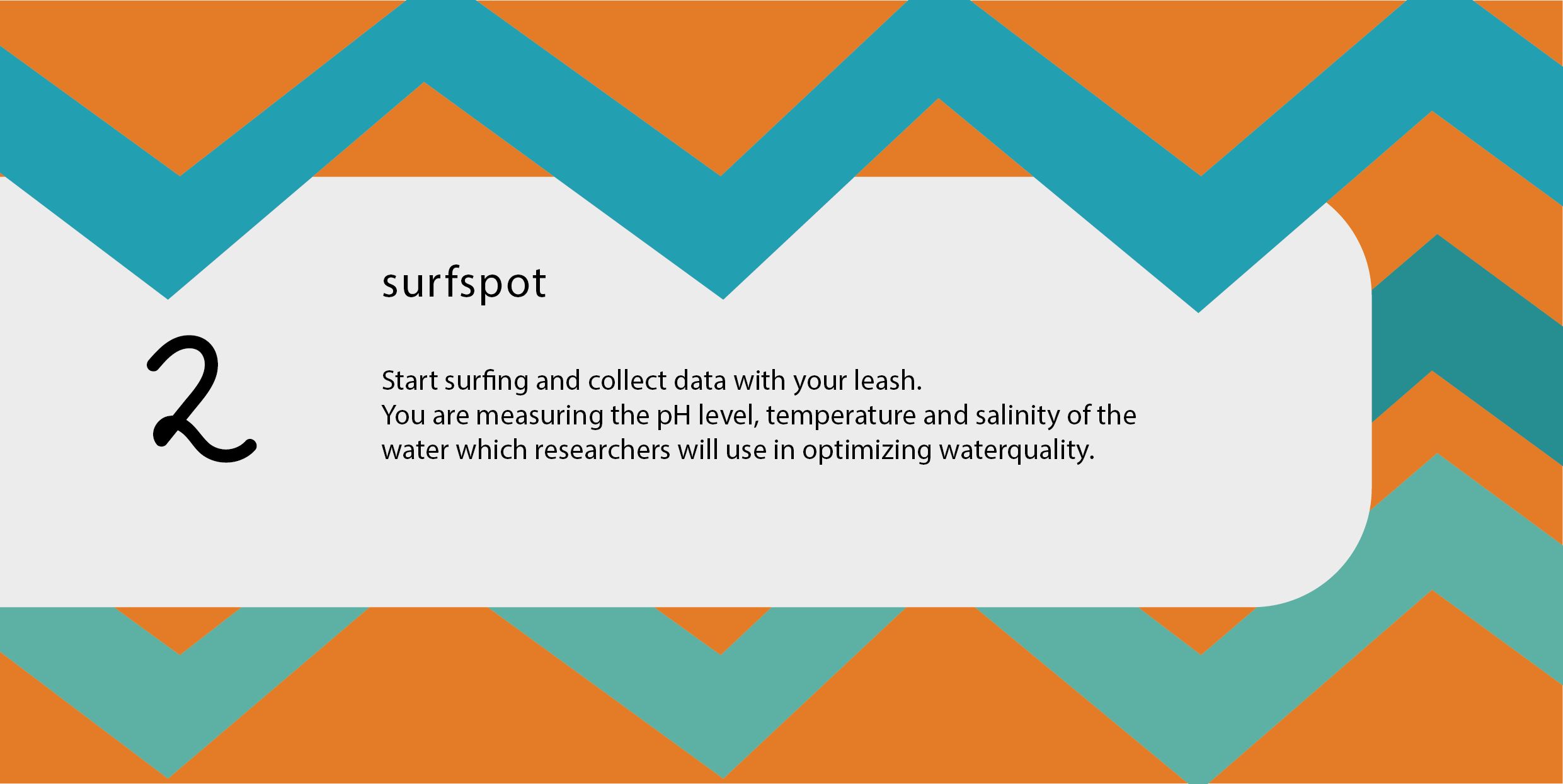
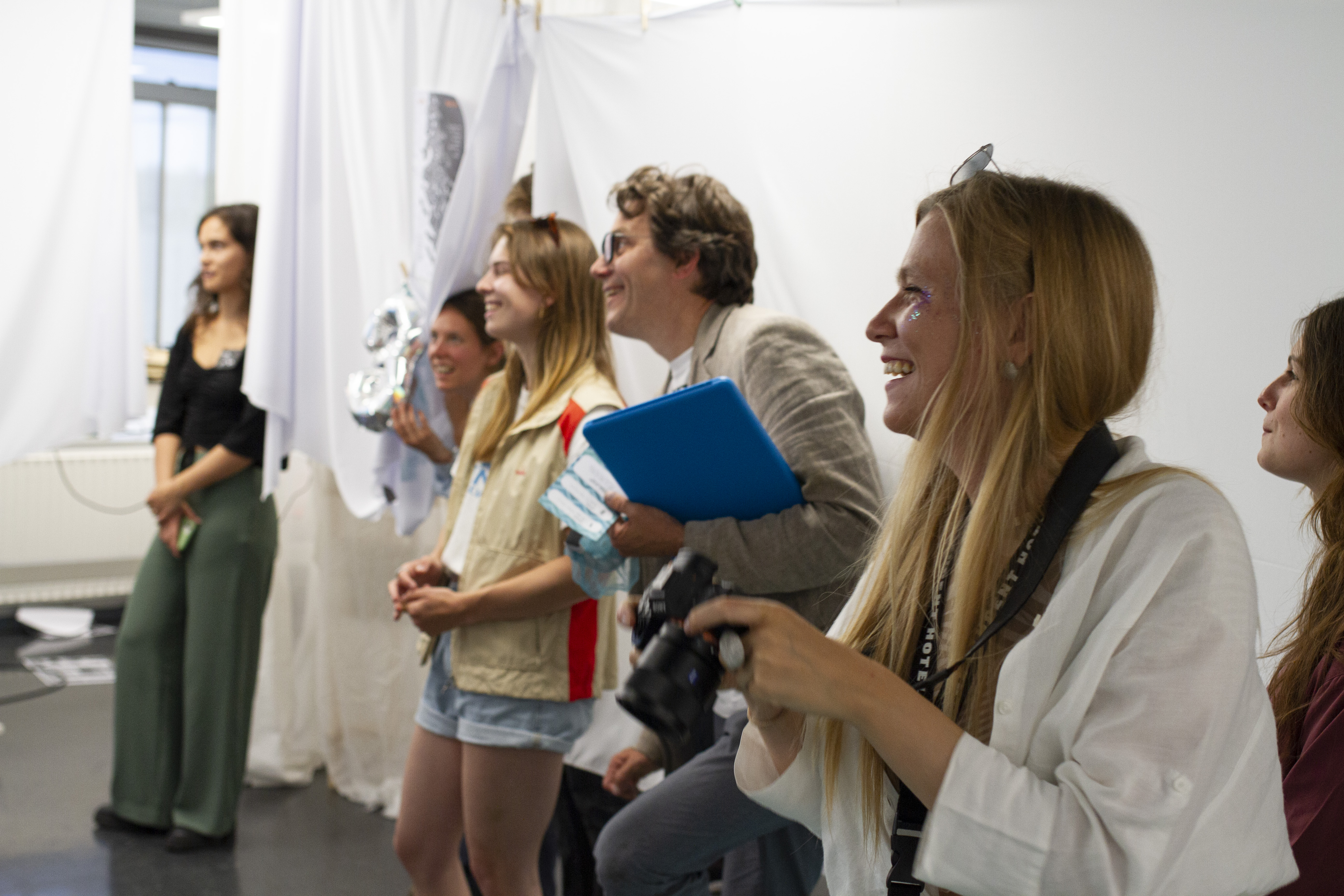
We created a rounded experience by letting the visitors put on the leash and go surfing. To stimulate as many senses as possible, we placed a huge screen in front of the surfboard and played surf videos. We also spread blue textiles around the surfboard which formed waves with the help of several fans. In our concept, it was important to us that surfers are not hindered or distracted from the experience of surfing. As we have learned that the sport is a way for many to relax and disconnect. For the exhibition, we placed a light strip at the beginning of the surfboard to visualise to the surfer when he/she has collected enough data and can come back down from the surfboard.

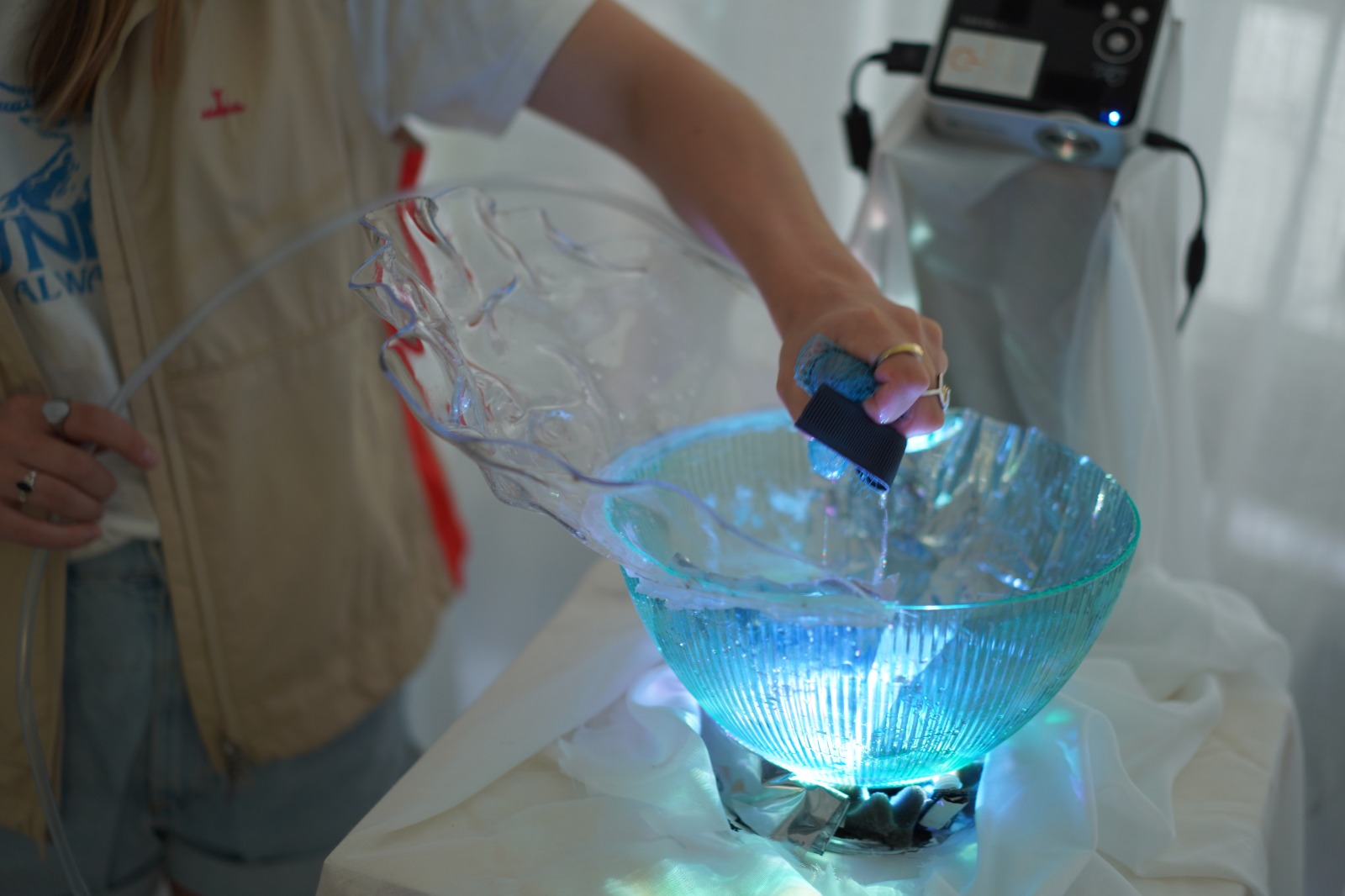
Finally, we have created an intimate atmosphere that helps the surfer to build a relationship with his or her data. In our concept, it was important to us to turn data, which is often associated with negative feelings (eg. privacy issues) into something positive and personal. Therefore we decided to transform the collected data into vibrations that create patterns in the water. Inspired by the natural reflections of light in water, we also reflected visuals in water. As the vessel was too heavy for our motor and the visualisations were not very visible on the curtain, we also showed the successful experiments from previous iterations on the mobile phone. This opened up the space for a discussion and really gave the visitors the freedom to help shape and further think about the concept.
Recommendations
We recommend O?Neill not just to use our concept as a means to create new patterns or designs for their swimwear, but to look beyond this. Our concept aims to convince O?Neill of the possibilities of citizen science and the power of simple experience enhancing elements. We hope they have learned that it is not about the flashiest clothing or the most accurate sensors that teach you new things, but that creating communities and taking moments to reflect on your impact on the world are the small steps we as citizens can take to contribute towards ocean preservation.
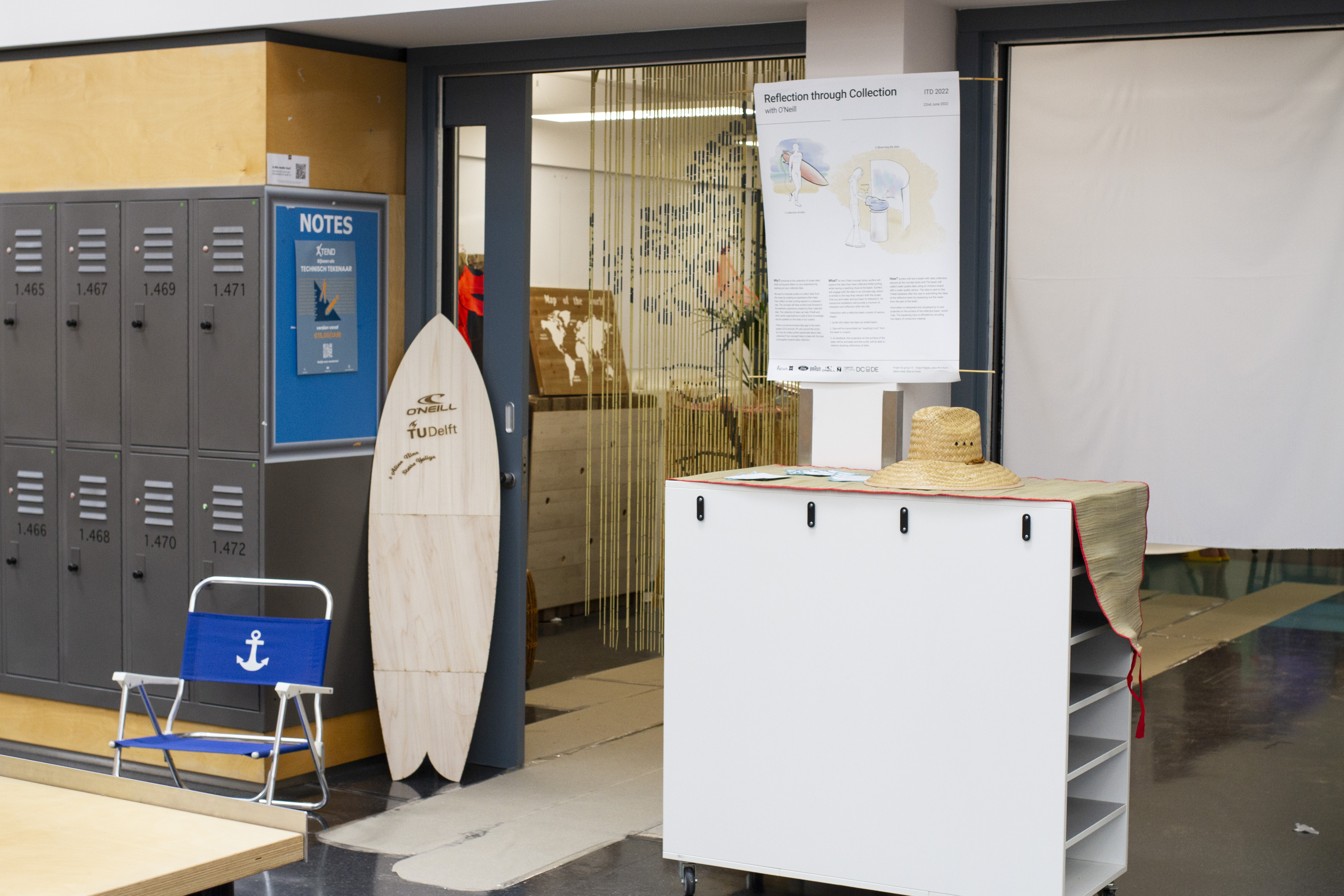
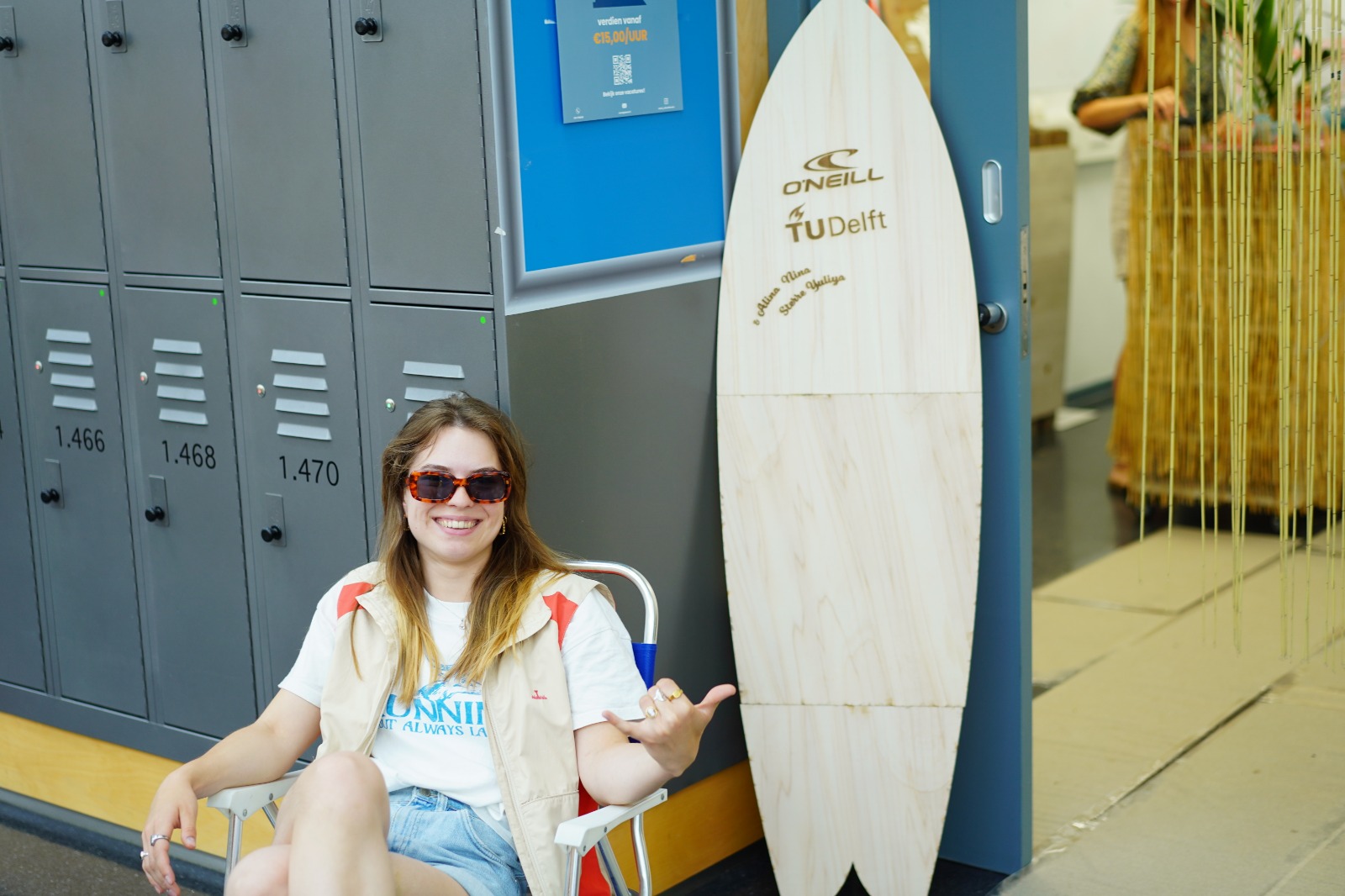
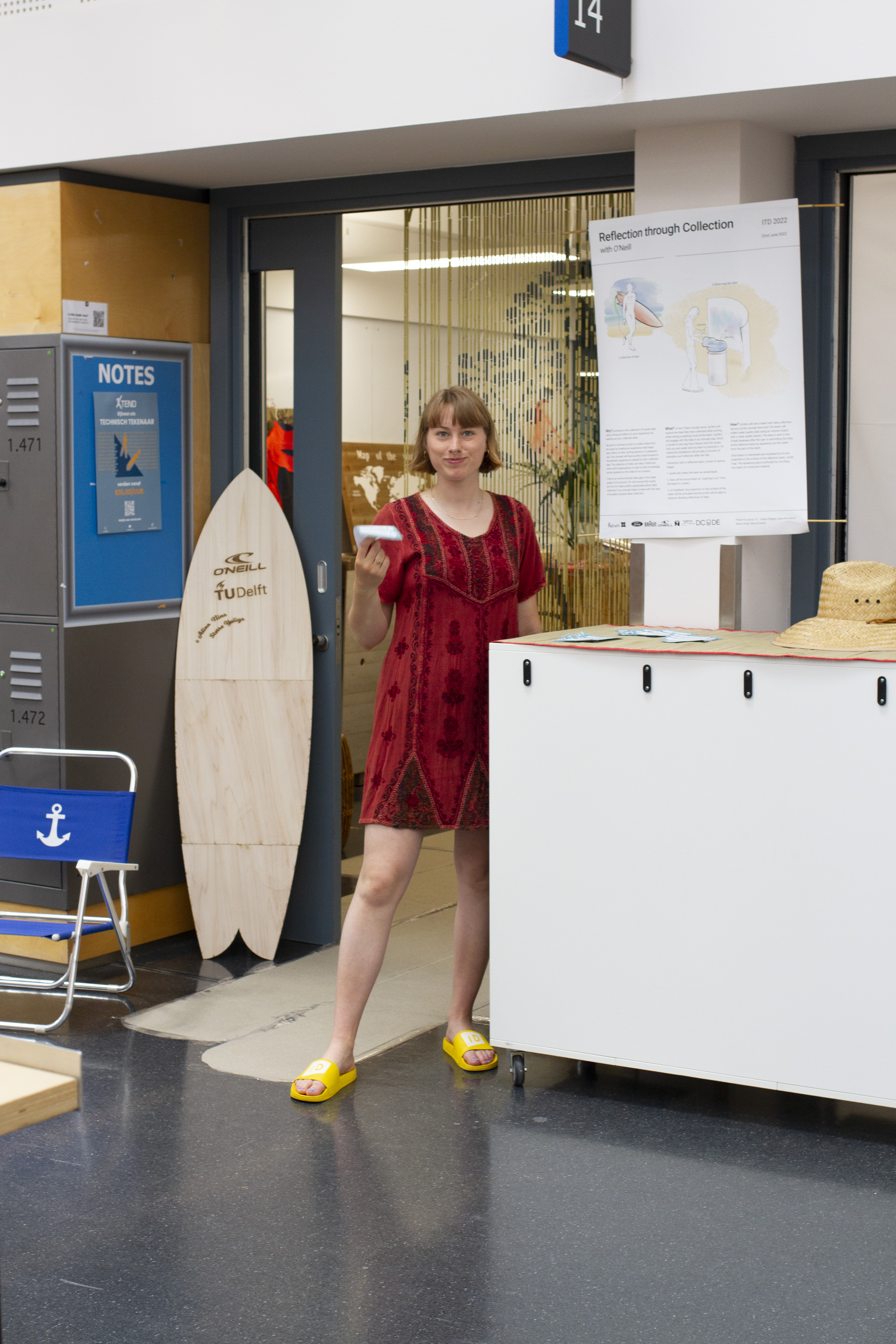
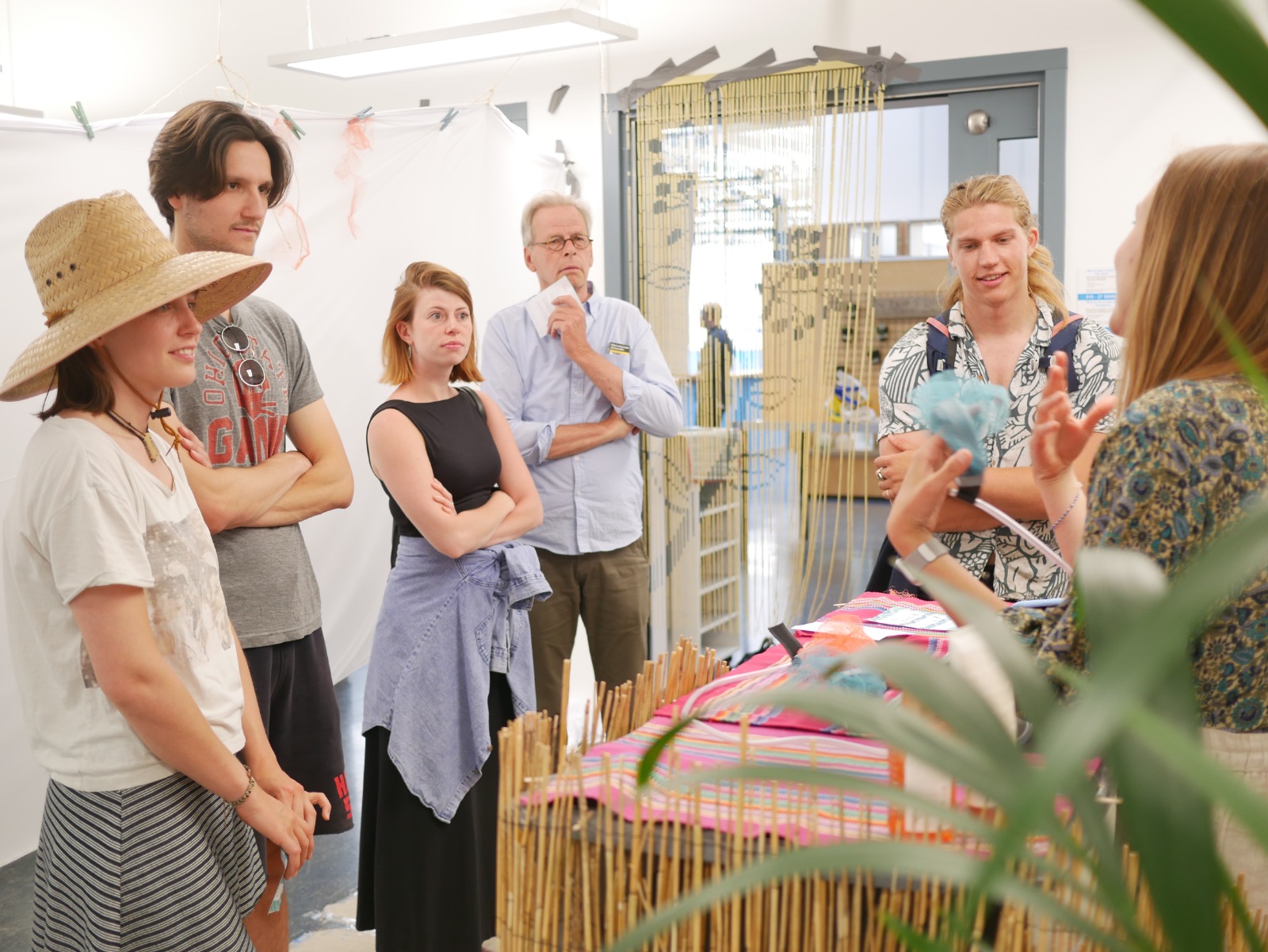
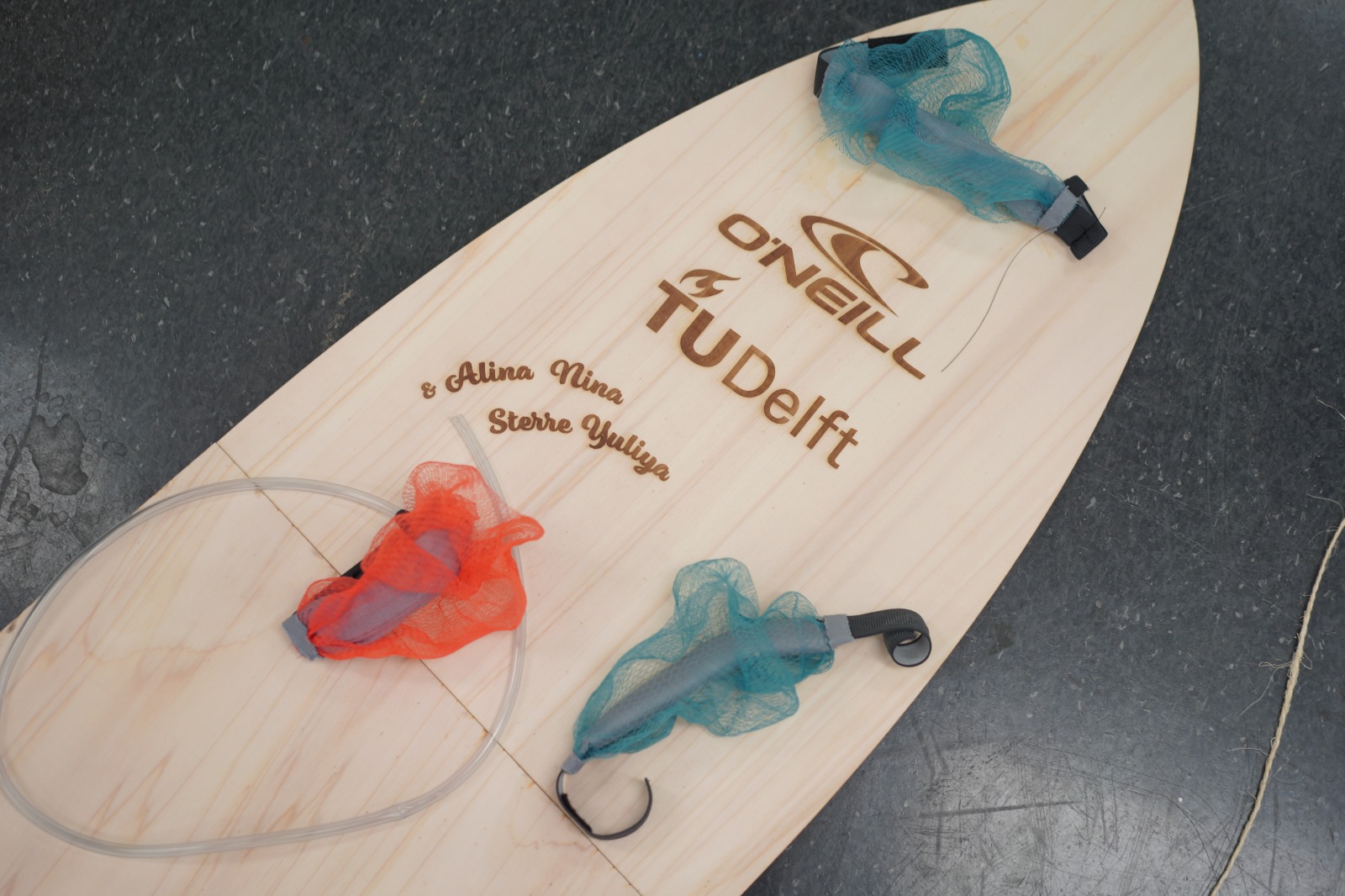
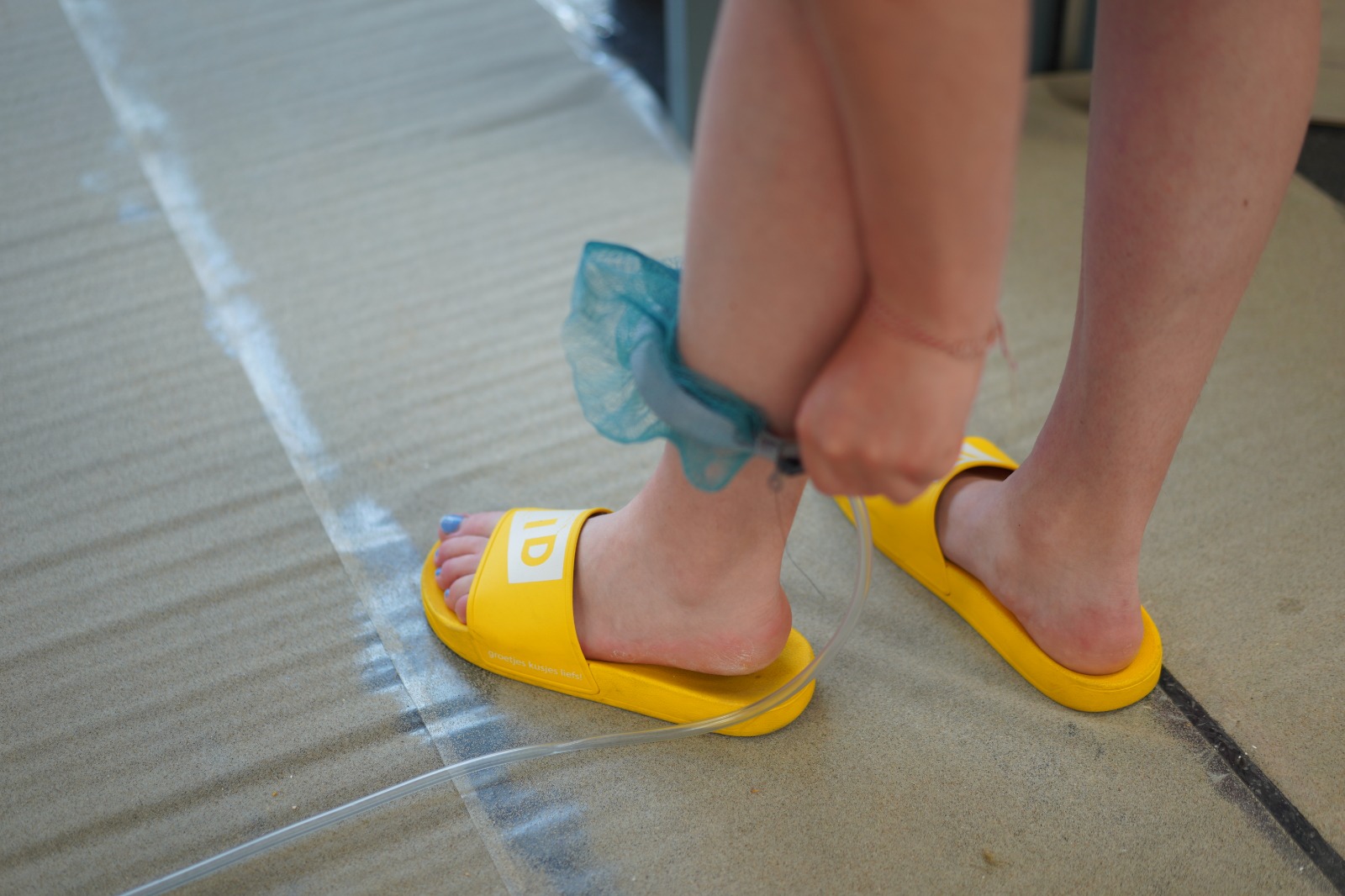
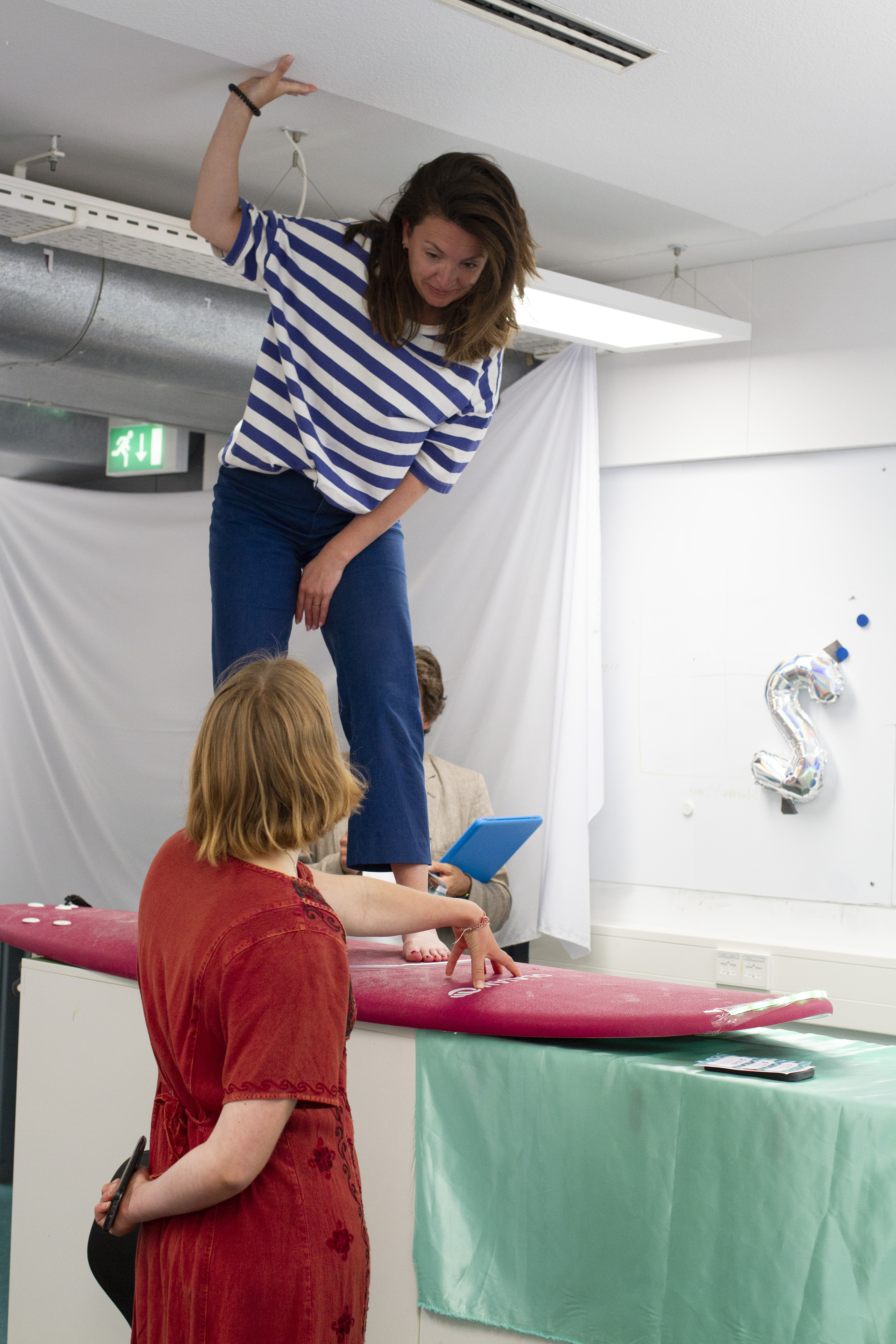
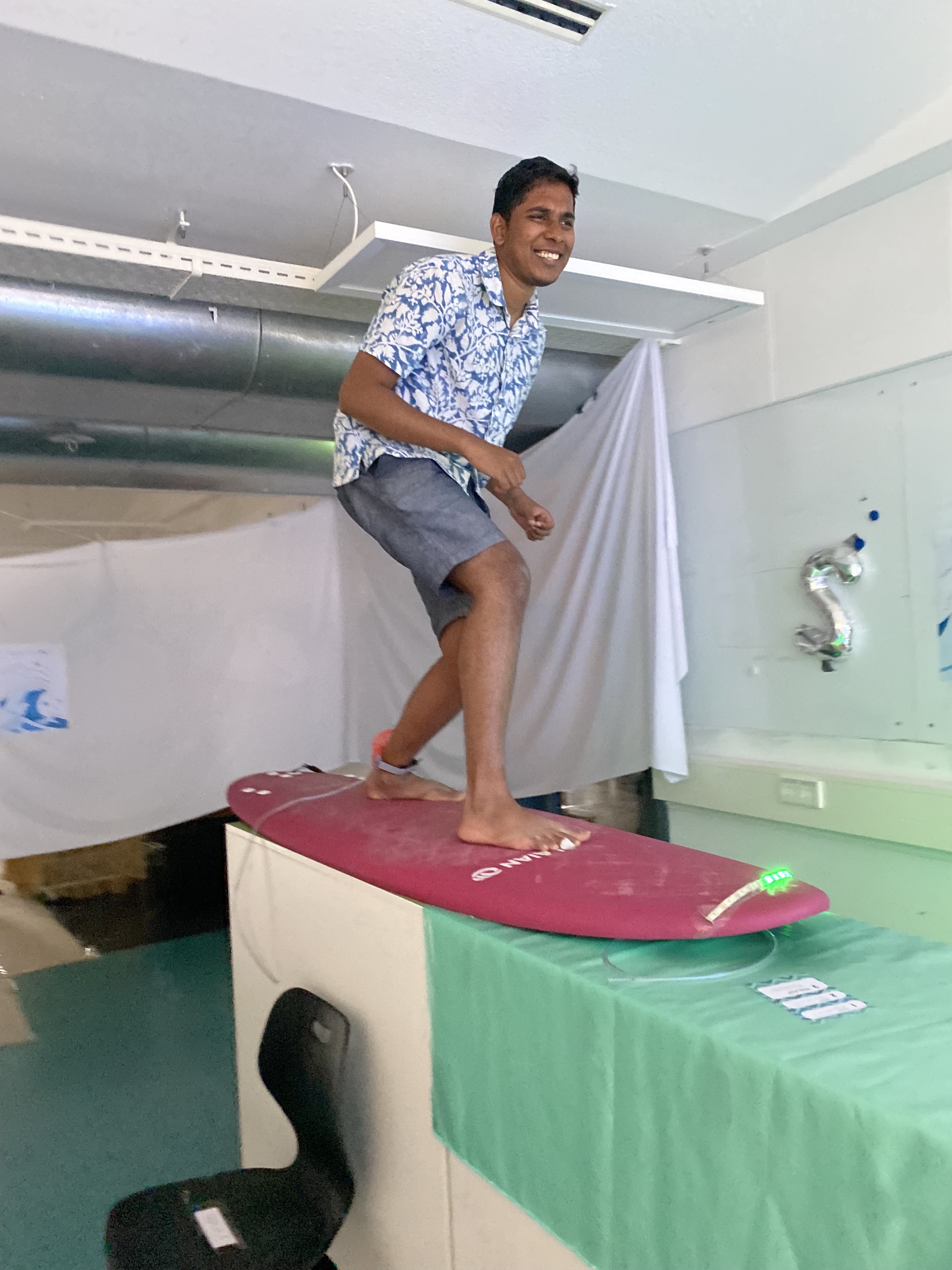
.jpeg)